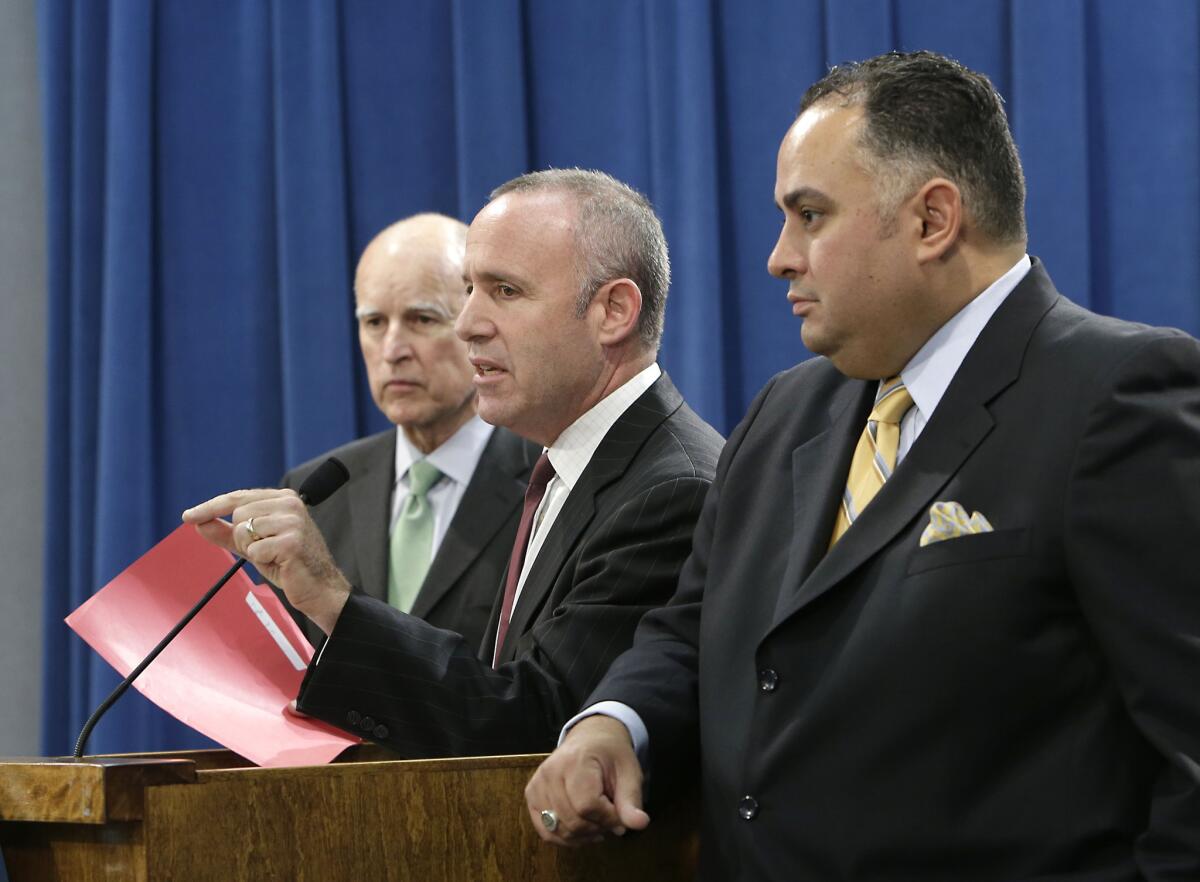A restrained California state budget

- Share via
Gov. Jerry Brown and state lawmakers are on track to do the unthinkable: approve a budget that spends considerably less money than the state’s Legislative Analyst expects the state to collect. The restraint in Sacramento is welcome, considering the state’s recent history of boom-and-bust budgeting. It’s also appropriate in light of the sluggish economic recovery and the fiscal hurdles that remain to be overcome.
The most significant aspect of the proposed budget agreement is the new formula it provides for funding public schools, a long-overdue change that we praised on this page Wednesday. Notably, it also would expand Medi-Cal (the state’s health insurance program for low-income Californians) to the maximum extent allowed by the 2010 federal healthcare law, bringing coverage to millions of the working poor. That step comes with some financial risk — the state will eventually be responsible for 10% of the medical costs of the newly eligible, with federal taxpayers picking up the rest of the tab. But it is the right thing to do not just morally but also for public health and the economy over the long term.
If approved, this budget would be the first since 2007 to be balanced without steep cuts or gimmickry. That’s partly because of the tax increases resulting from last November’s Proposition 30, but also because of the extensive cuts to schools and state services imposed during the economic downturn. Brown warned lawmakers early and often that the new revenue from Proposition 30 wouldn’t be enough to reverse many of those cuts, let alone fund new programs. Yet after state revenue spiked early in the year, the Legislative Analyst said lawmakers would have $4 billion more at their disposal than the governor suggested.
The budget committees in the Senate and Assembly initially embraced the analyst’s higher projections, proposing to use the additional dollars to undo some of the recession-driven cuts to programs for the poor while also funding a few new initiatives. But Brown ultimately persuaded Senate President Pro Tem Darrell Steinberg (D-Sacramento) and Assembly Speaker John A. Pérez (D-Los Angeles) to stick largely to his lower estimates, yielding a budget of $96 billion in the fiscal year that starts July 1. That level is about $600 million higher than the current year’s but $2 billion less than the Senate and Assembly budget committees had sought. That’s bad news for schools and community colleges, which will receive $1.6 billion less in the coming year than lawmakers had proposed.
Nevertheless, funding for education will be far higher than it would have been without Proposition 30, and will grow further if more revenue comes in than expected. And lawmakers still managed to make a few important repairs to the state’s safety net, restoring dental benefits for adults in Medi-Cal, undoing some of the reductions to welfare checks and child-care services for low-income working parents, and providing a one-time boost in funds for mental health programs. Although the state’s cash grants to families working their way off welfare remain woefully small, the proposed budget would allow them to grow if revenue from state sales taxes and vehicle license fees expands.
Some of these steps involved trade-offs; for example, the final proposal shifts about $300 million from county healthcare programs for the uninsured into other services for low-income families. But making tough choices is what responsible budgeting is about. More important, it includes no money to address real or potential liabilities that are likely to cost the state billions of dollars. These include a hotly disputed cut in the state’s payment rates for Medi-Cal doctors and hospitals, dramatically underfunded teacher pensions and health benefits for retired state employees, and a huge deficit in the state’s unemployment insurance program.
These lingering challenges mean that Sacramento can’t declare victory yet in its long-running battle to put its fiscal house in order. But the discipline shown by Brown and legislative leaders means the state will make progress for another year, instead of digging a bigger hole.
More to Read
A cure for the common opinion
Get thought-provoking perspectives with our weekly newsletter.
You may occasionally receive promotional content from the Los Angeles Times.









